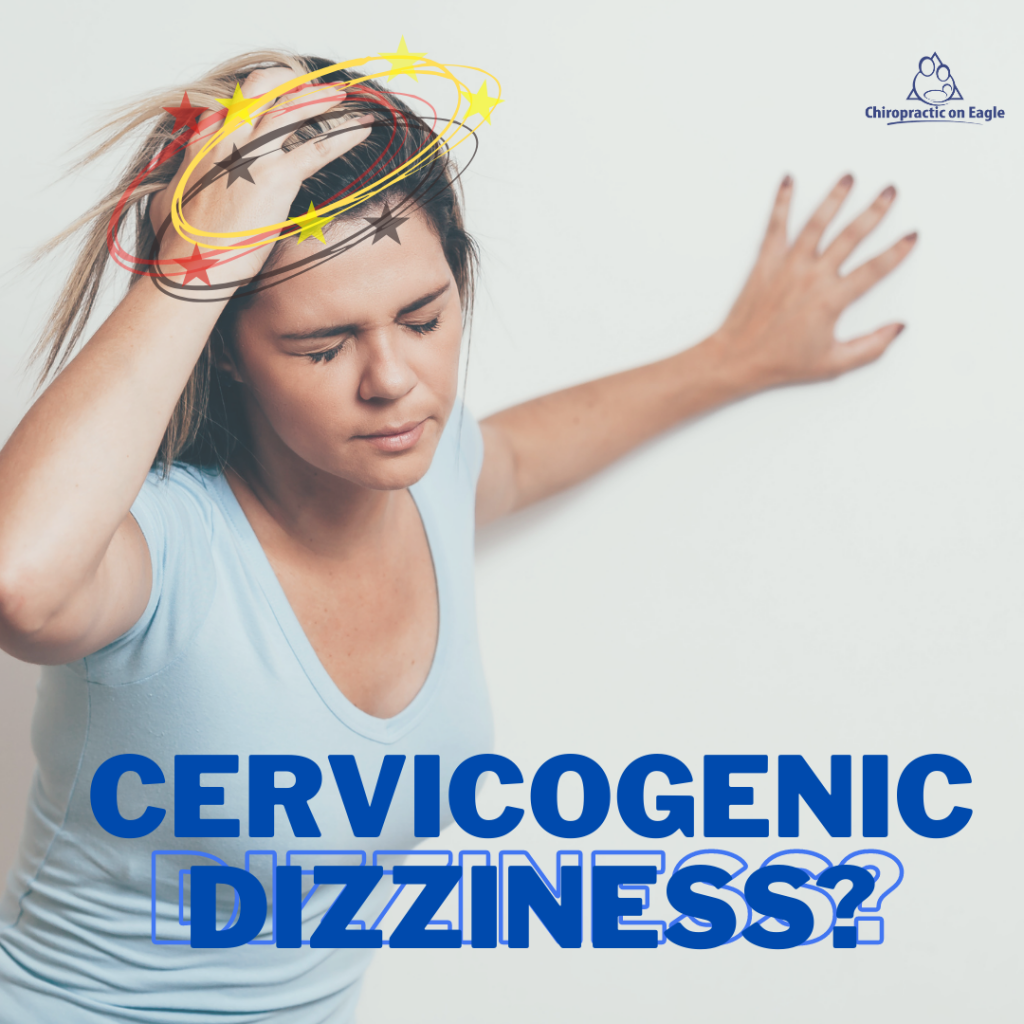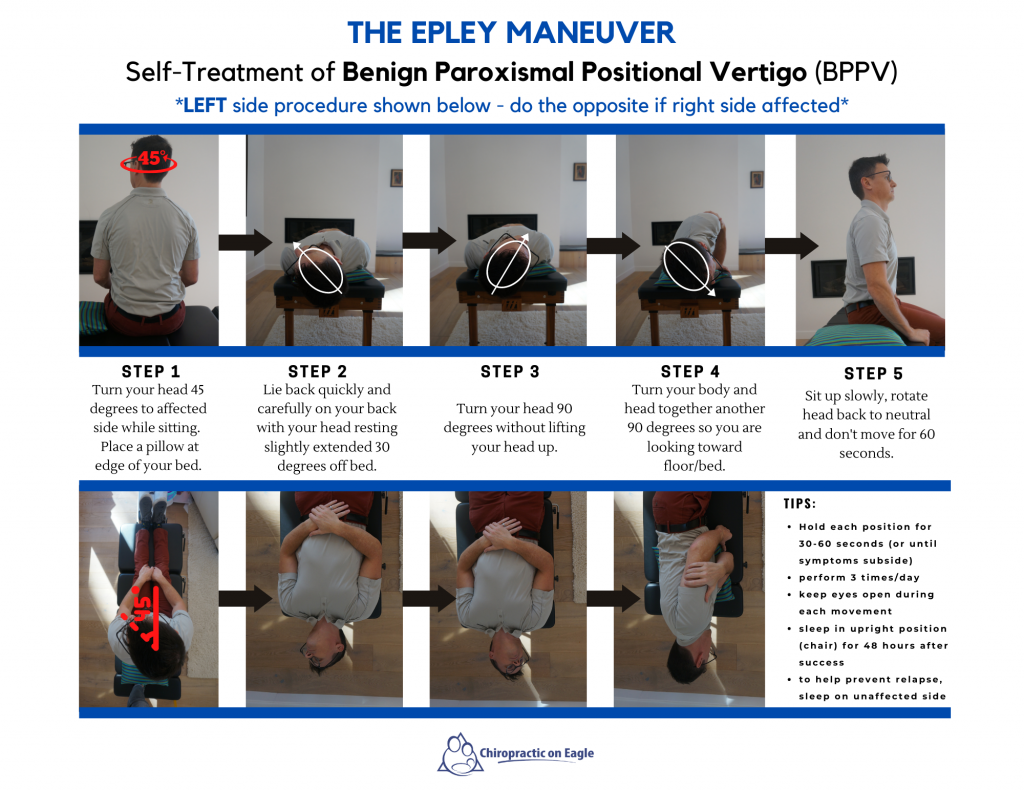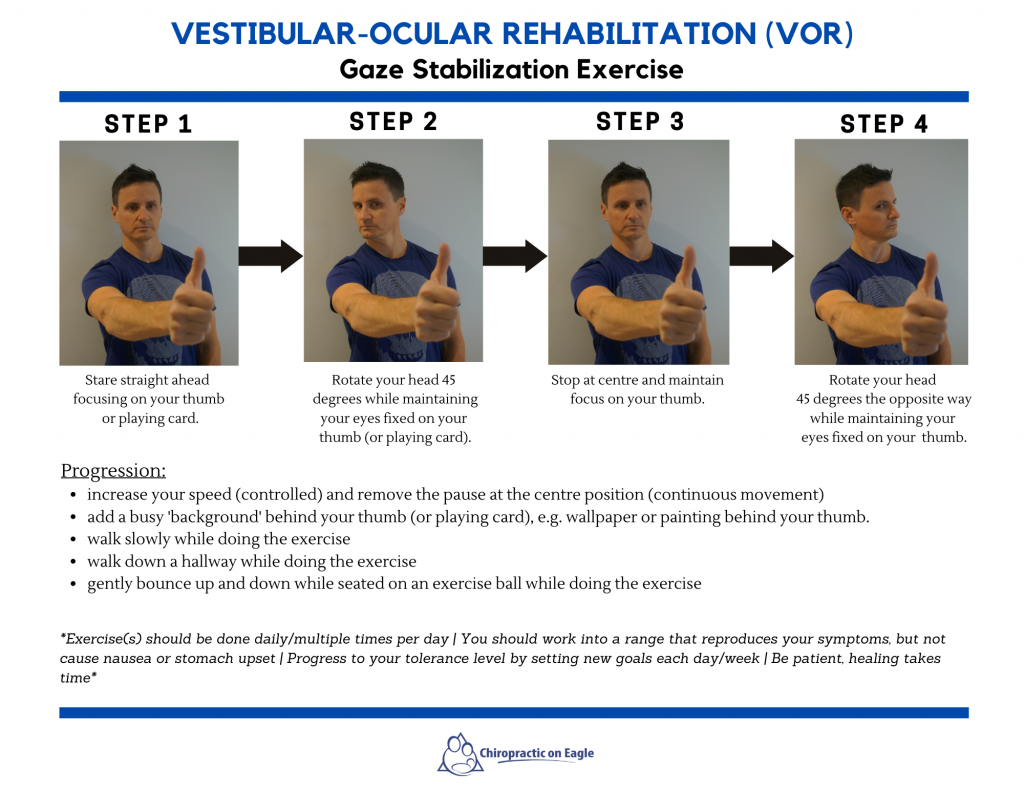How to Fix Cervicogenic Dizziness

In recent years, the number of people who have presented to my office with dizziness and vertigo (cervicogenic dizziness) has increased. Mounting stress and a sedentary lifestyle may be a contributing factor.
Dizziness is an unsteadiness, light-headedness, or a feeling of imbalance, while Vertigo is described as a ‘spinning’ sensation.
Newmarket Treatment for Cervicogenic Dizziness
To maintain proper balance and equilibrium, our body uses three systems. Each must be coordinated seamlessly to send and receive proper information to the brain. Our visual system (oculomotor), inner ear (vestibular system), and our cervical (neck) proprioceptive system work together to keep us balanced.
Many patients present having suffered for long periods of time with dizziness or vertigo, often having many relapses. Most patients I see for treatment of vertigo and dizziness have already had visits to their neurologist or physician. They usually come with a diagnosis or have had testing to rule out any other possible cause of their dizziness/vertigo.
Medications/Blood Pressure Problem
Side effects from some common medications for depression, high blood pressure, infections, and allergies can cause dizziness or vertigo. If you have just started a new medication or have been on one for a long time, speak to your physician or pharmacist. Also if you get dizzy or light-headed when getting up from a lying down position, you should get your blood pressure checked to rule out orthostatic hypotension.
Inner Ear Problems
Benign Paroxysmal Positional Vertigo (BPPV) is a problem in the inner ear. The crystals in the inner ear (otoliths) become dislodged and move to a place they should not be (semi-circular canal). If symptoms of vertigo or dizziness occur when you ‘look up’ or ‘roll over’ in bed, there is a good chance you have BPPV. But, there is hope. The Epley Maneuver is an effective treatment that has up to an 80% success rate. Try this it home but be prepared to temporarily aggravate the vertigo.

After successful completion of the Epley Maneuver, you should keep your head upright for 48 hours (no looking up or down). As well, try to sleep in a seated/inclined position (no horizontal sleeping) at 45 degrees for a couple of nights. Then try to sleep on the unaffected side thereafter to help prevent it from returning.
Previous Neck Injuries
Often tissues in the upper neck can be the source of dizziness. Especially in those who have had a car accident, concussion, or sports trauma. Even sitting with prolonged poor posture can result in dizziness. If you are sitting for hours in front of a computer, sewing machine or staring down at a phone, the upper neck tissues can become fatigued. Underlying conditions such as arthritis, chronic neck pain and tight muscles can be associated with dizziness. Even TMJ (temporomandibular joint) disorders may be the source of your dizziness.
Neck Structures Causing Dizziness?
Mechanoreceptors are small sensory cells that respond to pressure or distortion. Ligaments, discs, muscles, and facet joints in the cervical spine contain a high concentration of them. The mechanoreceptors relay information from these tissues about joint position and posture to the brain.
If the mechanoreceptors in the neck get injured or fatigued, the information sent to the brain becomes distorted (joint position errors). This faulty information results in ‘dizziness’ or ‘vertigo’ symptoms.
Patients with cervicogenic dizziness will usually be suffering with other associated conditions – headaches/migraines, neck pain, arthritis, vestibular migraines (migraines without pain, only dizziness), or visual vertigo.
Correcting Cervicogenic Dizziness
To successfully treat dizziness arising from structures in the neck, a thorough evaluation of the cervical spine must be completed. Some of the tests we perform to help determine the cause of cervicogenic dizziness are:
- neck range of motion
- objective spinal postural assessment
- thermographic nerve scan
- digital x-rays (upper cervical) if necessary
- neurological and cranial nerve testing
- orthopedic testing
- cervical alignment testing
- motion palpation (feeling how bones move through different ranges)
- soft tissue (muscle) testing
Specialized testing allows us to be successful in helping our patients manage, control, and correct their dizziness and vertigo. Treatment is aimed at increasing mobility (motion) in the upper neck and decreasing tenderness and inflammation. This helps restore defective proprioception. As well, re-training the cervical-ocular motor system is necessary.
Vestibular-Ocular Rehabilitation
The central nervous system is responsible for postural control and uses information from our visual system, inner ear, and upper neck to coordinate posture and balance. One thing that most dizziness/vertigo patients can benefit from is vestibular-ocular rehabilitation (VOR). A simple gaze stabilization exercise uses all 3 systems together (visual, inner ear, and upper neck) to retrain the nervous system.

SUMMARY
Correcting your dizziness or vertigo can be difficult sometimes, especially if you have suffered for a long time and with recurring episodes. Here is a quick summary of what you should do to give yourself the best chance of healing:
- Speak to your physician about any medication you are taking & also have your blood pressure checked. Also, rule out any vision problems or allergies that could be contributing to your dizziness.
- Do the Epley Maneuver if you have an inner problem. Do it at home or have a health professional do it for you in their office.
- Get a chiropractor to evaluate your upper neck (cervical spine).
- Correct any underlying postural or neck problems with corrective chiropractic.
- Implement a simple at-home vestibular-ocular rehabilitation program.
Dizziness and vertigo are unsettling symptoms but don’t give up hope. By using the tools above, I’ve witnessed many recover and know you can too.

P.S. Not sure if your dizziness is coming from your neck? Watch this to find out:
Chiropractic on Eagle
2:30 – 6:00 PMTuesday 7:30 – 10:45 AM
2:30 – 5:30 PMWednesday 2:30 – 6:00 PMThursday 7:30 – 10:45 AM
2:30 – 5:30 PMFriday ClosedSaturday ClosedSunday Closed
